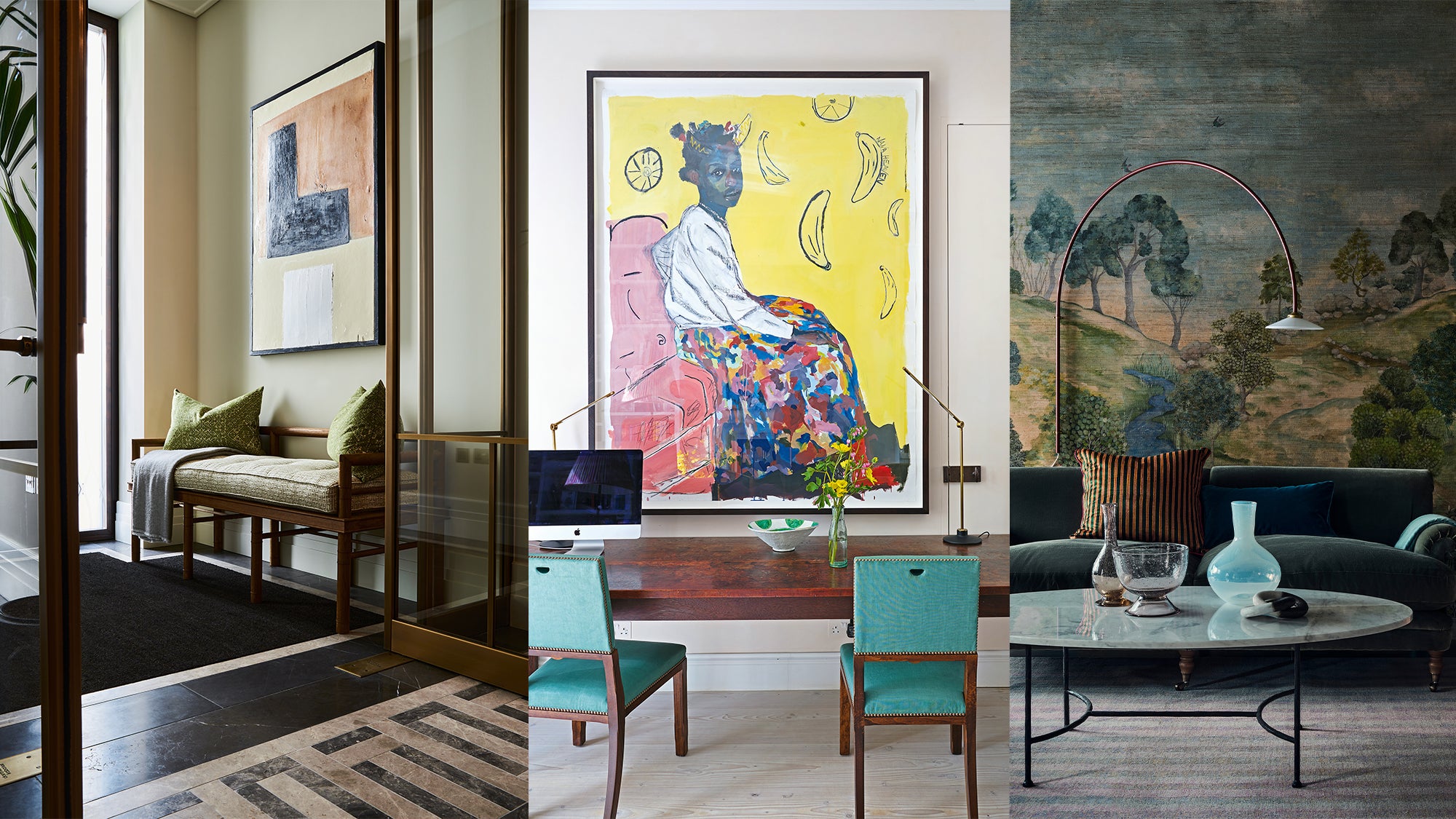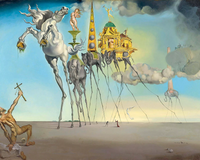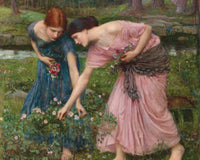I'm Lisa Marino, a dedicated home and office decorator, and I'm excited to embark on a journey through the wonderful realm of interior design. I am delighted to share with KUADROS my knowledge about the art of decorating with paintings, a process that can give new life to any space. So, if you're thinking about decorating your home or office with wall art, let's dive into my step-by-step guide.
Step 1: Crafting a Vision
Every decorating project begins with a vision. When I enter a new space, my first task is to evaluate its atmosphere, design, and the client's unique personality. Understanding your style and preferences is crucial as it lays the foundation for the entire project. I often find myself imagining what it would be like to be in their place, imagining the emotions and experiences they want to create in their space.

The vision is the north star that guides every choice and decision throughout the entire design process. When I enter a new space, I am like a detective seeking to uncover the essence of the room's potential. The process begins with the initial survey of the site.
Initial evaluation
The moment I set foot in a new space, I let my senses absorb the surroundings. I take note of the architectural elements, natural lighting and the layout of the room. Every corner offers clues on how to optimize space.
Collaboration with the client
Crafting a vision is not a solitary endeavor; It is a collaborative process with my clients. I have meaningful conversations with them, asking them questions about their lifestyle, preferences and aspirations for the space. Your input is invaluable as it helps me align my vision with your desires.
Mood and emotion
One of the most powerful tools in my design toolbox is emotion. I ask myself, "How do I want this room to feel?" Emotions are the threads that weave a compelling narrative into design. For a cozy living room, it can be warmth and comfort. In a workspace, it could be focus and productivity.

Inspiration boards
To realize the vision, I often create mood boards or mood boards. These visual collages include images, color swatches, and even fabric swatches that capture the essence of the desired environment. These boards become a reference point throughout the project, ensuring that every decision aligns with the initial vision.
Telling stories
Spaces have stories to tell and I see myself as a storyteller. I imagine the life that will unfold in the room: gatherings of friends in a cozy dining room, productive work hours in an organized office, or relaxation and serenity in a well-designed bedroom. The vision becomes the script of this narrative.
Adaptability
While the vision sets the course, it is essential to remain adaptable. Sometimes unexpected discoveries or unique opportunities arise during the design process. A truly expert decorator knows when to take a twist while staying true to the central vision.
Long term sustainability
A critical component of the vision is considering its sustainability. Will the design stand the test of time or is it a passing trend? Crafting a vision with longevity in mind ensures that the space remains relevant and timeless.
Visualization tools
Technology has opened exciting avenues for visualization. I often use 3D modeling software or virtual reality tools to help clients "walk through" the space before making any physical changes. This step allows them to truly grasp the potential of the design and make informed decisions.
Evolution of vision
As the project progresses, the vision may evolve. This evolution is not a deviation but a refinement. It's about refining the initial concept so that it better aligns with the realities of the space and the needs of the occupants.
Celebrating milestones
Reaching milestones along the way is crucial to maintaining enthusiasm and motivation. Whether selecting a unique piece of furniture or finalizing a color scheme, these moments bring the vision to life and build anticipation for the final reveal.
In essence, crafting a vision is the foundation upon which the entire design process is based. It is a dynamic and constantly evolving process that combines creativity, empathy and practicality. As a decorator, my greatest joy is seeing the initial vision come true, transforming a space into a place that reflects not only the design but also the soul and character of its inhabitants.
Step 2: The Canvas Wall Art Connection
One of my most treasured tools for creating stunning interiors is canvas wall art. This versatile medium offers a wide range of possibilities and allows for endless creativity. Canvas wall art is a remarkable medium that serves as a bridge between imagination and reality in the world of interior design. Its versatility and ability to transmit emotions and stories make it every decorator's dream. Whether you're drawn to landscapes, abstracts, or contemporary pieces, canvas wall art can transform any room.

A multifaceted canvas
Canvas wall art is like a blank canvas waiting for an artist's touch. The possibilities are limitless and range from traditional oil paintings to contemporary digital prints. This wide range allows me to find the perfect pieces that resonate with a room's design concept and the client's unique tastes.
Expressive emotions
Art, in any form, has the power to evoke emotions and create connections. Canvas wall art is no exception. It allows me to infuse a room with the desired atmosphere, whether serenity, vitality or nostalgia. The choice of the work of art becomes a means of emotional expression.

Anchor Focal Points
Every well-designed space benefits from a focal point that captures attention and draws people into the room. Canvas wall art serves as a captivating anchor, commanding the viewer's gaze and setting the tone for the entire space. Whether it's a large, dramatic piece in the living room or a smaller, more intimate one in the bedroom, canvas art excels in this role.
Responsive Themes
Canvas wall art covers a wide spectrum of themes and styles. I can integrate it seamlessly into any design, whether it's a coastal beach theme, a minimalist urban vibe, or a classic vintage style. The adaptability of canvas art makes it an essential tool for achieving design harmony.
Customization possibilities
Many artists and print studios offer customization options for canvas wall art. This means I can work closely with clients to create custom pieces that align precisely with their vision. From custom family portraits to custom typography art, the possibilities are as unique as the people I collaborate with.
Textural diversity
Canvas art is not just about visual appeal; It's also about texture. The tactile experience of canvas adds depth and character to a room. I often explore the textural qualities of canvas, especially in abstract or mixed media pieces, to introduce an engaging sensory dimension.

Scale and impact
The scale of canvas wall art can dramatically affect the overall design. Large-scale paintings create a bold, dramatic statement, while a series of smaller pieces can instill a sense of cohesion and rhythm. The choice of scale depends on the size of the room, the purpose and the design concept.
Healing and storytelling
The process of selecting and curating wall paintings is similar to storytelling. Each piece contributes to the narrative of the room. I consider the relationships between different works of art, making sure they harmonize, contrast or complement each other to create a cohesive visual story.
Timeless elegance
Canvas art has a lasting quality that transcends trends. I often choose paintings that exhibit timeless elegance, ensuring they remain relevant and appreciated for years to come. This sustainability is key to creating a design that will stand the test of time.
A personal connection
Lastly, the connection between canvas wall art and the individual is deeply personal. The choice of artwork often reflects the client's personality, interests and experiences. The emotional resonance of canvas art can make a space feel uniquely yours, making the connection deep and lasting.

In essence, the connection of the canvas to the wall art is the heart and soul of my decorating process. It is the brushstroke that adds depth, emotion and character to every room I design. The synergy between canvas art and design is a testament to the transformative power of visual storytelling.
Step 3: The magic of the color palette
Color is the heartbeat of any space. When selecting canvas paintings, it is essential to consider the color palette. Color is the silent language of interior design and plays a vital role in the ambiance and character of a space. Selecting a color palette is akin to casting a spell, magically transforming a room into a canvas of emotions, moods, and experiences. My goal is to find artwork that seamlessly blends in or complements the existing colors in the room. The beauty of canvas art is that it offers a range of colors and styles to match any decor.

These are the important aspects to take into account when choosing the color:
Set the mood
Color has an unparalleled ability to create the mood and atmosphere of a room. It's like choosing a movie soundtrack: each color evokes a different emotional response. For example, cool blues and greens induce calm, while vibrant reds and yellows exude energy and excitement.
Harmonize with existing elements
In each space there are elements that contribute to the color palette: the floor, the furniture, the architectural features and even the natural light. The magic lies in selecting colors that harmonize with these elements, creating a cohesive and visually pleasing environment.
Creating visual interest
A well-balanced color palette can transform a room from mundane to captivating. By playing with contrasting or complementary colors, I add layers of visual interest. An unexpected pop of color in a predominantly neutral room can be like a spark of magic, drawing attention and making the space come alive.
Reflecting personal style
The colors chosen for a space should reflect the personal style and preferences of its inhabitants. The magic of color lies in its ability to be deeply personal, allowing homeowners to infuse their spaces with their unique identities and tastes.

Improved functionality
Color is not just about aesthetics; It can also improve functionality. For example, in a home office, calming blues and greens can promote concentration, while warm tones like oranges and browns can create a cozy atmosphere in a living room. The right color palette enhances the way a space is used.
Creating flow
In larger spaces or open floor plans, color serves as a thread that ties rooms together, creating a sense of flow and continuity. The magic of a well-planned color palette ensures that each area transitions seamlessly into the next, creating a harmonious whole.
A game of lights
The interaction between color and light is a magical phenomenon. Natural and artificial light sources can alter the perception of color, making it appear differently at different times of the day. I consider the play of light in a room to ensure that the chosen colors shine to their fullest.
Evoking the beauty of nature
Often, the natural world serves as a timeless source of inspiration for color palettes. From the calming blues of the sky to the rich earthy tones of the forests, the hues of nature bring a touch of magic to interiors, connecting occupants to the world beyond their walls.
Fit for purpose
The choice of colors should be in accordance with the purpose of the space. For example, a bedroom could benefit from calming, soothing colors, while a dining room could liven up with vibrant, uplifting hues. The magic of color is in its adaptability to the unique requirements of each room.
Timeless or modern
Deciding between timeless and modern color palettes is a balancing act. I often incorporate timeless neutrals as a base and add trendy colors as accents. This way, you can enjoy the magic of color without fear of it quickly becoming obsolete.
At its core, the magic of a well-crafted color palette is its ability to transform a room from an empty canvas into a vivid tapestry of emotions and experiences. It is a journey of discovery, a dance of harmony and a powerful tool that brings life to the spaces we create. The right color palette is like a magic wand that casts a spell that makes every room look truly enchanting.
Step 4: Choose the perfect theme
The theme of a canvas artwork can convey a powerful narrative. For a serene bedroom, a relaxing landscape can be ideal. In a vibrant office, an abstract composition can infuse energy. Canvas wall art fits various themes and moods, allowing me to choose pieces that resonate with the purpose of the room.
Selecting the perfect theme for wall art is similar to selecting the protagonist of a story: it sets the stage, evokes emotions, and forms the core of the design narrative. In the world of interior decoration, the theme of wall art is the muse that guides the direction of design, enriching the overall ambiance of a space.
Theme consistency
One of the first considerations when choosing your theme is to make sure it aligns with the overall theme or style of the room. For example, in a coastal-themed living room, artwork with seascapes, shells, or beach scenes fit perfectly. This consistency creates a harmonious and cohesive environment.
Emotional Resonance
The theme of wall art can awaken powerful emotions. It is essential to select pieces that resonate with the intended emotional atmosphere of the room. A serene landscape can promote relaxation, while vibrant abstract art can infuse a space with energy and creativity.
Personal connection
For homeowners, the theme of wall art often carries a personal connection or meaning. It may be a reflection of your hobbies, interests or experiences. When a work of art has personal meaning, it becomes a topic of conversation and a source of joy every time it is admired.
Telling stories
Art has an innate ability to tell stories. Whether a narrative captured in a figurative painting or an abstract piece that invites interpretation, the subject adds depth and narrative to the room. It encourages viewers to interact with the space on a deeper level.
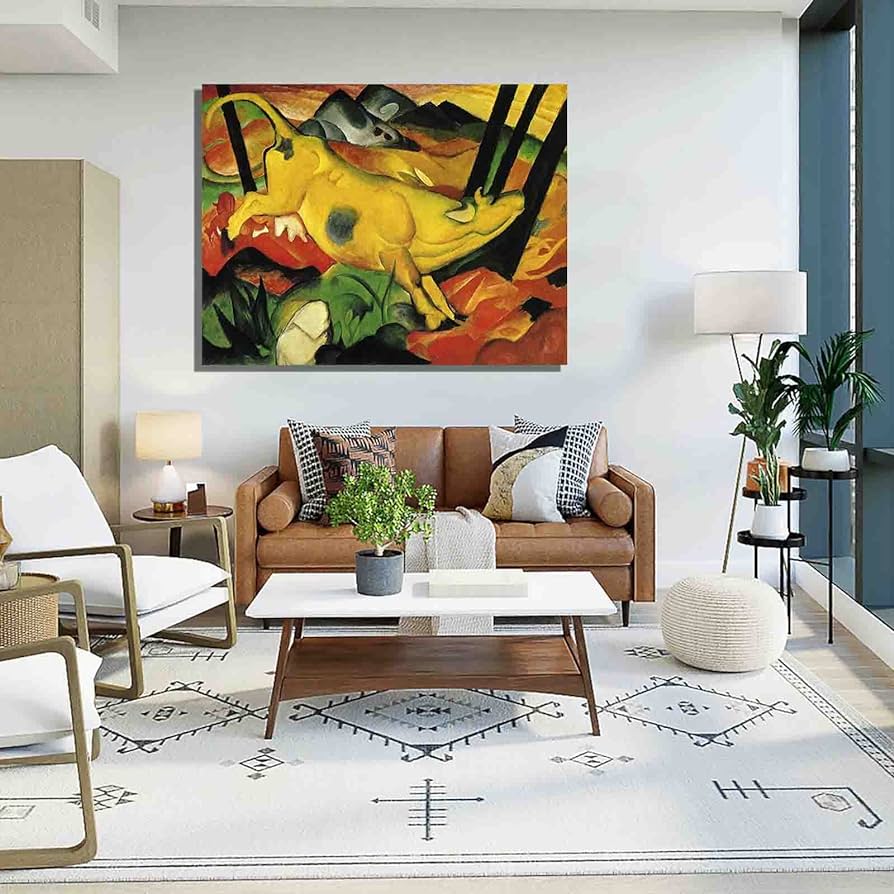
Balance and scale
The scale and balance of the chosen theme must be taken into account. In a spacious room, a large piece can serve as a striking focal point, while in smaller spaces, smaller or grouped pieces of art may be more appropriate. Striking the right balance ensures that the artwork complements the space rather than overwhelming it.
Cultural and historical importance
Art often reflects cultural and historical elements. Incorporating themes that have cultural or historical significance can enrich the narrative of the room. For example, a room inspired by a specific historical era may feature artwork that reflects the art of that period.
Multifunctional art
Some themes serve multiple functions. For example, a mirror or reflected piece of art not only adds visual interest but also creates a feeling of spaciousness by reflecting light and the surrounding environment. Choosing a multifunctional theme can be a smart design choice.
Artistic media
Different themes lend themselves to various artistic mediums. For example, detailed botanical illustrations may be better suited for watercolors or botanical prints, while modern, abstract concepts may thrive in acrylic or mixed media art. The subject matter often influences the choice of medium.
Seasonal and temporary options
In some cases, the theme may change seasonally or temporally. This approach allows homeowners to renew their space to suit changing seasons or special occasions. It's a fun way to experiment with different themes and moods throughout the year.
Artistic Interpretation
The beauty of the theme lies in its interpretation. Artists often bring their unique perspectives and styles to a subject, adding layers of complexity and depth. The theme, seen through the lens of different artists, can create various design possibilities.
In short, choosing the perfect theme for wall art is a nuanced art form within interior decorating. It is a reflection of the purpose of the room, the personality of the owner and the desired emotional atmosphere. The theme is the essence of the design narrative, and its careful selection enriches the space, turning it into a canvas that tells a story, evokes emotions and generates conversation.
Step 5: Play with artistic mediums
Canvas wall art comes in various art mediums, from the rich textures of oil paintings to the soft elegance of watercolors. Selecting the right medium can increase the impact of the artwork and create a tactile experience that enhances the ambiance of the room.
The choice of artistic medium is a fundamental aspect when selecting and displaying wall art. Like a director selecting the right actors for a film, choosing the right artistic medium enhances the visual impact and emotional resonance of the work of art. Let's explore the fascinating world of art mediums and how they bring interior spaces to life.
Oil paintings
Oil paintings are famous for their rich colors, depth and texture. They are created using pigments suspended in oil, usually linseed oil. The slow drying time of oil paints allows for complex details and layering, making them ideal for realistic or traditional styles. The depth and luminosity of oil paintings add an aura of sophistication to any room.
Acrylic paintings
Acrylic paints are known for their versatility and vibrant colors. They dry quickly and can be used to create both bold and subtle textures. Acrylics are preferred for contemporary and abstract art due to their adaptability and ability to capture dynamic brush strokes. Their quick drying time makes them ideal for those who prefer to rotate their wall art regularly.

Watercolor paintings
Watercolors offer a delicate, translucent quality that creates an airy, ethereal atmosphere. They are created by mixing pigments with water and are often associated with soft, relaxing palettes. Watercolor artwork is a popular choice for bedrooms, bathrooms, and spaces where tranquility is a priority.
Mixed media art
Mixed media art combines various mediums and materials, such as acrylics, watercolors, ink, collage, and texture pastes. This eclectic approach adds depth and complexity to the artwork. Mixed media pieces are often visually appealing and can be a focal point of conversation in a room.
Recordings and reproductions
Prints and reproductions offer an affordable way to enjoy renowned works of art. They can be produced using various techniques including digital printing, giclée printing or screen printing. High-quality prints and reproductions capture the essence of the original works of art and are suitable for a wide range of interior styles.
Photography
Photography as wall art captures moments frozen in time. From stunning landscapes to evocative portraits, photography can add a personal touch to a space. The choice of photography style, whether black and white, color or sepia, can influence the overall feel of the room.
Sculptural art
While not a traditional painting medium, sculptural art can be displayed on walls to create a three-dimensional focal point. Sculptures, relief art, and even wall-mounted art objects can add depth and intrigue to a room's design.
Digital art
In the digital age, digital art has gained prominence. Digital pieces can be displayed on screens, paintings or as prints. The flexibility of digital art allows for an ever-changing display, with the ability to easily rotate artworks to suit different seasons or moods.
Textile art
Textile art uses fabrics and fibers as a medium. Includes tapestries, quilts, fabrics and textile collages. Textile art adds warmth and tactile appeal to a space and is particularly suited to bohemian, eclectic or cozy decorating styles.
Metal and wood art
Metal and wood can be used to create stunning wall sculptures or relief art. These mediums add an industrial or rustic charm to a space and are perfect for modern, industrial or farmhouse-themed interiors.
Each artistic medium has its unique attributes and personality, making selecting wall art an exciting and expressive task. The choice of medium should resonate with the room's overall design concept, the owner's preferences, and the desired emotional impact. It is the masterstroke that transforms the canvas of a room into a work of art, creating an environment that speaks to the soul and stimulates the senses.
Step 6: Framing Elegance
Choosing the frame for canvas wall art is a crucial consideration. A well-selected frame can enhance the beauty of the artwork while also harmonizing with the overall decor. With canvas art, there is the flexibility to explore different framing options, from ornate to minimalist.
Choosing the frame for your wall art is like selecting the perfect frame for a beautiful photograph: it enhances and elevates the artwork, complementing the overall aesthetic of the room. Framing is not simply a functional aspect; It is an art in itself that can significantly impact the visual appeal of the artwork and the room as a whole. Let's explore the world of frames and how they add a touch of elegance to wall art.
Ornate frames
Ornate frames are often associated with classic and traditional aesthetics. They feature intricate details, gilding and decorative motifs. Ornate frames can add a sense of opulence and grandeur to a room, making them an ideal choice for formal spaces such as dining rooms or elegant living rooms.
Minimalist frames
Minimalist frames are characterized by their simplicity and clean lines. They are discreet and let the artwork take center stage. Minimalist frames are well suited for contemporary and modern interior designs, where the focus is on an elegant and uncluttered aesthetic.

Floating frames
Floating frames give the illusion that the artwork is suspended within the frame, leaving a space between the artwork and the edge of the frame. This style is particularly popular for paintings as it creates a feeling of depth and dimension. Floating frames are versatile and can work well with various interior styles.
Mat
Matting is often used in conjunction with framing to create space between the artwork and the glass or acrylic front. Mattes can enhance the visual impact of the artwork, draw attention to specific details, and provide a clean, finished look. The choice of color and thickness of the mat can dramatically influence the overall effect.
Shadow boxes
Shadow boxes are deep frames that allow you to display three-dimensional objects or art with significant relief. They are an excellent option for displaying sculptural or mixed media art. Shadow boxes add depth and intrigue to a room, making the artwork a focal point of conversation.
Gallery frames
Gallery frames are stylish, contemporary frames commonly used in art galleries and museums. They are characterized by their thin profiles and come in various finishes, such as black, white or metallic. Gallery frames create a modern, sophisticated look that works well in gallery-style wall arrangements.
Old frames
Antique frames are true treasures and often feature intricate craftsmanship and worn charm. These frames can add a sense of history and character to a room. When combined with antique or vintage style art, they create a nostalgic and eclectic atmosphere.
Custom frames
The custom frame offers unlimited possibilities. Allows the creation of frames that perfectly match the dimensions and style of the artwork and the room. Custom frames are a great option for unique or irregularly sized works of art and are often used to create statement pieces.
Frameless options
Some artworks, especially contemporary ones on canvas, are designed to be frameless. This minimalist approach can create a sleek, uncluttered look that allows the artwork to blend seamlessly into the wall.
Additional options
The choice of frame should complement the overall design of the room. It can harmonize with the color palette, style and furniture, ensuring that the framed artwork becomes an integral part of the aesthetics of the space.
Framing is more than just a means of protecting and displaying works of art; It is a design decision that adds an extra layer of sophistication and elegance to a room. The right choice of frame can make a work of art appear complete, transforming it from a simple piece of decor to a statement of style and refinement.
Step 7: Organize the impact
Arranging canvas paintings is an art form in itself. I love experimenting with various layouts: symmetrical grids, creative groupings, or a single captivating focal piece. The goal is to achieve a balance that draws attention without overwhelming the senses.
Arranging wall art is like choreographing a dance: the placement, balance, and composition of artwork within a room can dramatically impact the overall visual appeal and emotional resonance of the space. The right arrangement not only highlights each piece but also creates a harmonious and attractive atmosphere. Let's explore the art of arranging wall art for maximum impact.
Symmetrical designs
Symmetrical arrangements are classic and timeless. They involve placing identical or mirrored works of art on either side of a central point, creating a sense of balance and formality. Symmetry works well in traditional, formal spaces, such as dining rooms or entryways.

Asymmetrical designs
Asymmetrical arrangements are more dynamic and free-spirited. They involve a balance of artwork of different sizes and often appear more relaxed and informal. Asymmetry adds visual interest and energy to a room, making it suitable for contemporary or eclectic interiors.
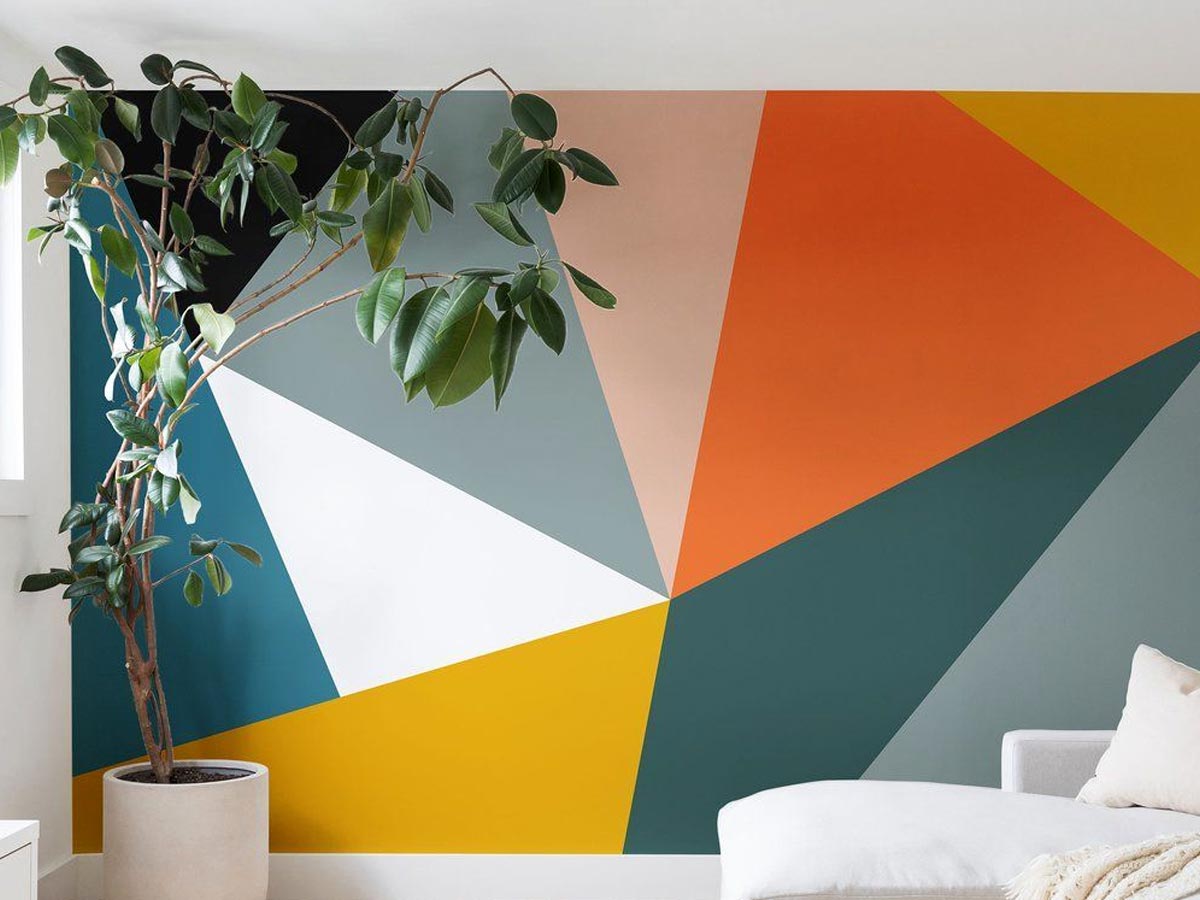
Gallery walls
Gallery walls are a popular choice for displaying multiple works of art in a cohesive arrangement. They can be symmetrical or asymmetrical and allow for a curated art collection. Gallery walls are versatile and work in various rooms, from living rooms to hallways.
Living room style arrangements
Salon-style arrangements involve densely grouping a mix of artwork in an intentionally chaotic but visually pleasing manner. This style is reminiscent of 18th century French salons and creates a feeling of intimacy and wealth. It is often used in living rooms and eclectic spaces.
Linear and grid layouts
Linear and grid layouts involve arranging artwork in straight lines or grids. These arrangements create a sense of order and structure, making them suitable for contemporary and minimalist interiors. Linear layouts work well in hallways or staircases, while grid layouts are perfect for displaying a collection of artwork.

Focal point location
Placing a larger or distinctive piece as a focal point can draw attention and anchor the room's design. The central piece of art should be placed strategically, such as above a fireplace mantel or a statement piece of furniture.
Eye level placement
A common rule of thumb for hanging artwork is to place it at eye level, making sure it is easily visible and attracts the viewer. For most people, this means hanging the center of the artwork about 57 to 60 inches from the floor.
Landscape versus portrait orientation
The orientation of the artwork can affect the visual flow of the room. Horizontal artwork often conveys a sense of calm and stability, while vertical pieces can add height and a sense of grandeur. The choice depends on the proportions of the room and the desired atmosphere.
Spacing and consistency
Consistent spacing between artworks is crucial to maintaining a polished and deliberate appearance. Properly spaced pieces avoid a cluttered or chaotic feel. This spacing should be consistent throughout the arrangement.
Group by theme or color
Grouping artwork by theme or color can create a unified and cohesive arrangement. For example, you can group a collection of botanical prints or works of art with a similar color palette, reinforcing the design concept of the room.

Use of accessories
In addition to artwork, consider using accessories such as shelves, sconces or decorative elements to complement the arrangement. These elements can add depth and dimension to the display and further enhance the overall impact.
Arranging wall art is a creative process that requires attention to detail and an eye for composition. It's an opportunity to express the personality of the room and tell a visual story. The arrangement should not only showcase the beauty of each piece, but also create a memorable and immersive experience for anyone who enters the space.
Step 8: Illuminating Art
Proper lighting is essential to show off the brilliance of canvas wall art. I make sure each piece is well lit, allowing its beauty to shine and captivate anyone in the room.
Proper lighting is the unsung hero of interior design, and when it comes to displaying wall art, it becomes the focus that accentuates the beauty and meaning of each piece. Lighting art involves selecting the right lighting solutions to enhance the visual impact of the artwork and create a captivating atmosphere in the room. Let's delve into the art of lighting art and how it brings wall art to life.
Natural light
Natural light is the most beautiful and sought after source of lighting for wall art. Highlights the true colors and textures of the artwork. When placing art near windows, consider the direction of the light and how it affects the viewing experience. Use sheer curtains or blinds to control direct sunlight, which can fade and damage artwork over time.

Decorative lighting
To highlight specific works of art, accent lighting is a must. Track lighting, wall-mounted fixtures, or recessed spotlights can be strategically placed to direct focused light onto the art. Adjustable fixtures allow flexibility when lighting different pieces in the collection.
Image lights
Picture lights are stylish and designed specifically to illuminate works of art. These fixtures are typically mounted above or below the artwork and give off a soft, even glow. Picture lights not only highlight the artwork but also create a sense of sophistication and drama.
LED lighting
LED lighting has become a popular choice for illuminating art due to its energy efficiency and versatility. LED strips or puck lights can be discreetly installed to provide constant, adjustable lighting for an entire wall or art gallery. LED lights also emit minimal heat, which helps protect artwork from damage.
Color temperature
The color temperature of the lighting can significantly affect the way the artwork is perceived. Cool white light (higher color temperature) can enhance the vibrancy and clarity of contemporary pieces, while warm white light (lower color temperature) can create a welcoming and inviting atmosphere, ideal for traditional and intimate settings.
Dimming controls
Installing dimming controls for art lighting offers flexibility in setting the desired ambience. Dimming allows you to adjust the intensity of the light, allowing you to adapt the lighting to different occasions and moods.
Layered lighting
Layering lighting sources creates depth and complexity in room lighting. Combining general ambient lighting with task lighting, accent lighting and wall sconces can create a multi-dimensional lighting scheme that enhances the overall aesthetic of the space.
Artistic lighting arrangements
When lighting gallery walls or art groups, consider the hierarchy of the arrangement. The central or focal point should receive a little more light than the surrounding pieces to draw attention. Experiment with lighting angles to reduce glare and create shadow effects to add dimension.
Smart lighting systems
With the advent of smart home technology, it is now possible to control and customize lighting with ease. Smart lighting systems allow owners to adjust the color, intensity and schedule of lighting remotely, ensuring that art is always displayed in the best possible light.
Lighting as art
Some lighting fixtures can be considered works of art. Chandeliers, pendant lights, and sculptural lighting fixtures can become focal points while also providing functional lighting. These accessories can be chosen to complement the style and theme of the room.
Illuminating art is about achieving a balance between functionality and aesthetics. Properly lit art not only enhances the visual impact of the artwork, but also contributes to the overall atmosphere and mood of the room. The right lighting can transform a space into a captivating gallery where each piece of art shines and tells its unique story.
Step 9: Achieve harmony
Harmony is the cornerstone of a well-designed space. The careful placement of wall paintings throughout the room ensures that energy flows smoothly, creating an environment where people feel comfortable and inspired.
In the field of interior design, achieving harmony is the pinnacle of success. It is the art of combining various elements (colors, textures, furniture and wall art) into a cohesive and visually pleasing whole. Harmony is the sweet spot where a room feels balanced, comfortable, and aesthetically rewarding. Let's explore the profound concept of achieving harmony in interior decoration.
Color harmony
Color is one of the most powerful tools to achieve harmony. It's about selecting a color palette that unifies the space and evokes the desired emotions. Color harmony can range from monochromatic (using variations of a single color) to complementary (using colors opposite each other on the color wheel) or analogous (using adjacent colors on the wheel).

Texture harmony
Texture adds depth and dimension to a room. Achieving texture harmony involves balancing smooth, rough, soft and hard surfaces. For example, pairing a plush sofa with a rough-hewn wooden coffee table creates a tactile, balanced experience.
Furniture harmony
Furniture plays a crucial role in establishing harmony. Choosing pieces that are the right scale, proportions, and style for the room ensures that they complement the space rather than overpowering it. Harmony can be achieved by selecting furniture with similar design elements, such as a cohesive material or color palette.

Harmony of style
Achieving harmony in terms of style involves selecting furniture and decor that align with the overall design theme. Mixing styles can work when done intentionally, but requires careful balance to avoid visual discord. For example, combining traditional and modern elements can create a transitional style that appears harmonious.
Harmony of scale and proportion
Scale and proportion refer to the size of objects and their relationship to each other. Achieving harmony in scale and proportion means ensuring that furniture and decor are sized appropriately for the room and for each other. Oversized furniture in a small room can disrupt harmony, while mismatched proportions can create visual tension.
Artistic harmony
Wall art plays a vital role in achieving harmony. The art selection should harmonize with the color palette, style and theme of the room. Additionally, the arrangement of the wall art should complement the design and flow of the room.
Lighting harmony
Lighting contributes to both function and aesthetics. Achieving lighting harmony involves selecting fixtures that suit the style and purpose of the room. Layering lighting sources, including ambient, task and accent lighting, ensures a harmonious and balanced lighting scheme.
Functional harmony
A harmonious room should not only look good, but also function effectively. Furniture should be arranged to facilitate the flow of traffic and provide comfort and convenience. Achieving functional harmony ensures that the room perfectly serves its intended purpose.
Cultural and personal harmony
The personal and cultural preferences of the occupants influence the achievement of harmony. Incorporating items that have personal meaning, such as family heirlooms or cultural artifacts, can create a sense of harmony and connection to the space.
Transition spaces
Transitional spaces, such as entrances and hallways, play a unique role in achieving overall harmony. They serve as connectors between different areas of the home. Harmonizing these spaces involves creating a perfect transition in terms of color, style and decoration.
Subtle contrasts
While achieving harmony is about balance, introducing subtle contrasts can add visual interest and prevent a room from appearing monotonous. Contrasts in color, texture or style can create focal points and depth while maintaining overall harmony.
At its core, achieving harmony is a delicate dance of balancing various design elements to create a space that feels whole and complete. It's about ensuring that each element contributes to a unified and visually pleasing composition. Harmony is the secret ingredient that transforms a room into a sanctuary of comfort, aesthetics and emotional resonance.
Step 10: Preserving beauty
Canvas wall art is not just about decoration; it's about preserving and appreciating a work of art. I educate my clients on how to care for their artwork, protecting it from direct sunlight, extreme humidity, and temperature fluctuations to ensure its longevity.
Preserving the beauty of an interior space is an ongoing journey that requires care, maintenance, and thoughtful strategies. As an interior decorator, my commitment extends beyond the initial design to ensure that the beauty of the space lasts over time. Let's explore the importance of preserving the beauty of an interior and the strategies that can be employed.
Regular cleaning and maintenance
The cornerstone of preserving beauty is regular cleaning and maintenance. Dusting, vacuuming and wiping surfaces prevents the buildup of dirt that can diminish the aesthetic appeal of a room.
Proper care of materials
Different materials, whether wood, fabric or metal, require specific care. Knowledge of the materials used in decoration and furniture is essential to maintain its beauty. The right cleaning agents, polishes and treatments can help prolong the life and beauty of these materials.
Upholstery care
Upholstered furniture can be a significant investment. To preserve its beauty, it is essential to follow the care instructions and, if necessary, professionally clean it. Additionally, using covers or blankets can protect your upholstery from stains and wear.
Maintenance of works of art
Art and wall decoration require maintenance to prevent dust and damage. It is essential to regularly inspect and clean frames, glass, and the artwork itself. UV protected glass can protect art from fading due to exposure to sunlight.
Floor care
Floors are a prominent part of any interior and require special care. Regular sweeping, vacuuming, and proper cleaning methods are essential to preserving the beauty of hardwood, tile, carpet, or other flooring materials.
Protection against sun damage
Sunlight can cause fading and damage to furniture, floors, and artwork. Using curtains, blinds or window films that block or reduce UV rays helps preserve the vibrancy of colors and materials.
Furniture placement
Thoughtful furniture placement can help preserve the beauty of a room. Avoid placing furniture in direct sunlight or near heating vents, as this may cause discoloration and damage. Consider using furniture protectors to prevent scratches and dents on your floors.
Seasonal Updates
Seasonal updates can keep a space fresh and in line with changing trends or personal preferences. Simple changes like changing pillows, adding seasonal decor, or rearranging furniture can breathe new life into a room.
Periodics inspections
Regular interior inspections can detect problems early. Detecting signs of wear, tear or damage allows for timely repairs or replacements, preventing further deterioration.
Professional services
Some aspects of interior preservation may require the expertise of professionals. This includes services such as deep cleaning, upholstery restoration, furniture refinishing, and art repair. Hiring experienced professionals ensures that these tasks are completed with care and expertise.
Temperature and humidity control
Maintaining stable indoor temperature and humidity levels can help prevent damage to materials such as wood, leather, and textiles. Using humidifiers or dehumidifiers as needed can contribute to a healthier indoor environment.
Storage solutions
Proper storage solutions such as closets, cabinets and shelves help keep the interior organized and tidy. Organizing items properly prevents damage and makes it easier to clean and maintain the space.
Educate customers
As an interior decorator, part of my role is to educate clients about the importance of preservation. Sharing tips and guidelines on how to care for your interiors ensures that you continue to enjoy the beauty of your spaces.
Preserving the beauty of an interior is a collaborative effort between decorators and homeowners. It involves both preventive measures and remedial actions to maintain the aesthetics and functionality of the space. By implementing these strategies, we can ensure that the beauty of an interior lasts for years, providing a welcoming and visually appealing environment.
Conclusion: transforming spaces with canvas wall art
Decorating with canvas paintings is not just a task; It is an opportunity to create moments and memories. I am proud to curate spaces that tell stories, evoke emotions and inspire. Canvas wall art provides an infinite canvas for your imagination, allowing you to turn your surroundings into something truly extraordinary.
As you embark on your decorating journey, remember that your space is an extension of yourself. Let your heart guide you and trust in the power of canvas wall art to transform your environment into a haven of creativity and beauty.
Thank you to KUADROS customers for joining me on this journey and I hope you are as inspired as I am by the limitless potential that painting wall art offers. Until next time, and happy decorating!
KUADROS ©, a famous painting on your wall.

